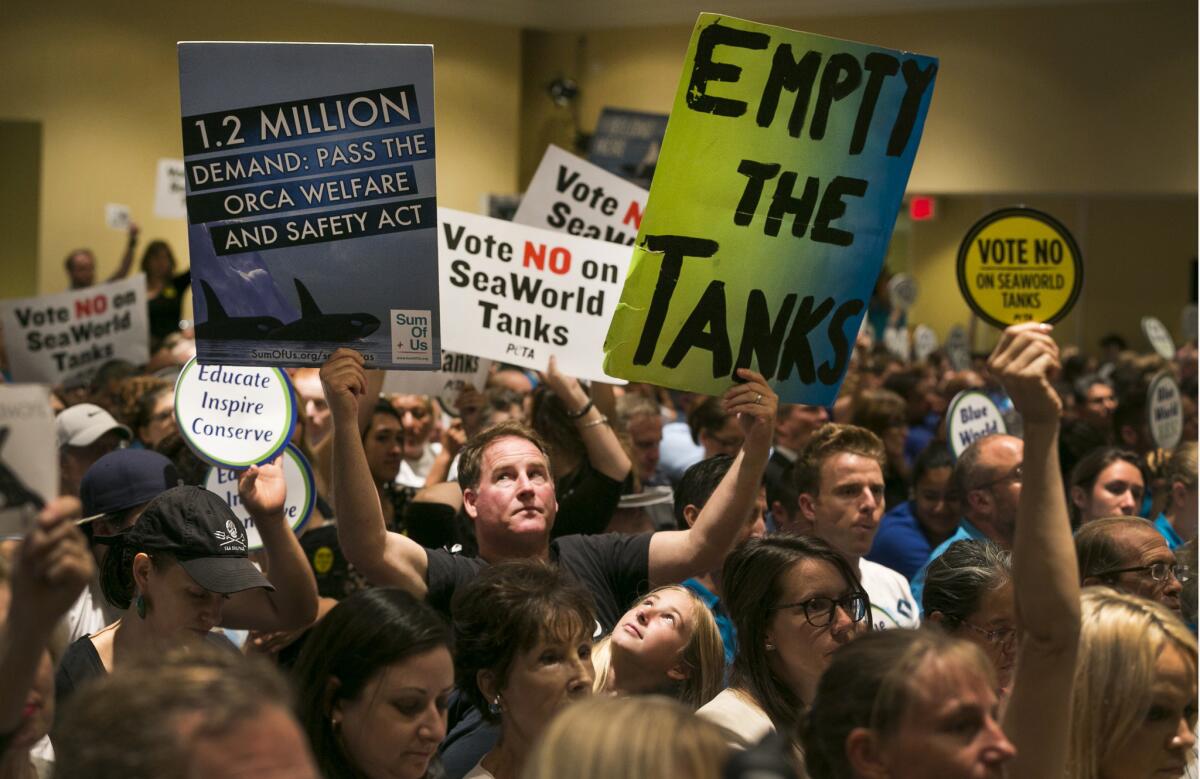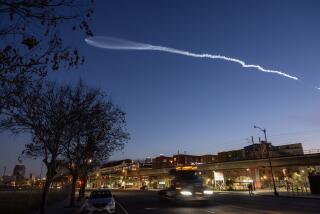Can the Coastal Commission tell SeaWorld what to do with its orcas?

The California Coastal Commission voted Thursday to end captive orca breeding and restrict the movement of whales in and out of SeaWorld San Diego.
Shares of SeaWorld Entertainment Inc. dropped a day after a state agency approved an expansion plan for the San Diego park’s killer whale tanks but with conditions that would bar captive orca breeding and limit the transfer of whales in and out of the park.
The company’s stock dropped 93 cents, or 4.86%, to $19.19 in mid-day trading.
“This is bad news,” said James Hardiman, equity research analyst and managing director at Wedbush Securities. “A much better result for SeaWorld would have been if the Coastal Commission had denied their request.”
The California Coastal Commission has authority over construction along the state’s shoreline. On Thursday, SeaWorld’s lawyers argued that only the federal government has the jurisdiction to restrict orca breeding and transfers.
The Coastal Commission focuses on preserving and protecting coastal values and resources, said Jonathan Zasloff, a UCLA law professor who has studied the agency. If SeaWorld appeals the panel’s decision, the Coastal Commission would need to demonstrate that the breeding and transfer restrictions are related to these values.
“Can they make an argument that this actually assures the ecological health of the coastal zone?” he said. “If it’s about animal welfare, apart from coastal resources, then it’s a little trickier.”
In the past, courts have broadly interpreted the Coastal Commission’s permit approvals, said Richard Frank, professor of environmental practice at the UC Davis School of Law.
“I think the Coastal Commission’s actions yesterday reflect kind of a broader skepticism of capturing and maintaining in captivity orca whales and similar marine mammals,” he said.
NEWSLETTER: Get essential California headlines delivered daily >>
SeaWorld described its $100-million expansion plan as a way to improve the whales’ habitat and increase research opportunities. The Blue World Project intended to replace an existing 1.7-million-gallon holding facility with a new 450,000-gallon pool and a 5.2-million-gallon tank.
Now, with conditions set on the project’s approval, moving forward essentially would signal the end of the park’s orca program. But not going through with the project would increase the negative publicity the company has faced since the 2013 release of the documentary “Blackfish,” which accused the park of mistreating its whales.
The criticism has taken a toll on the company’s finances. In August, SeaWorld reported a slight drop in attendance and revenue in its quarterly report. In addition to bad weather at SeaWorld San Antonio and a shift in the timing of Easter, the company also blamed the decline in attendance on the ongoing criticism by animal rights groups.
The Coastal Commission’s vote on Thursday was no exception, as testimony stretched on for more than eight hours. Both SeaWorld and People for the Ethical Treatment of Animals brought in hundreds of supporters.
In a statement, SeaWorld Chief Executive Joel Manby said the company was disappointed with the conditions placed on the project’s approval and would review its options.
“Depriving these social animals of the natural and fundamental right to reproduce is inhumane, and we do not support this condition,” he said.
For more business news, follow @smasunaga.
ALSO:
VW exec blames ‘a couple of’ rogue engineers for emissions scandal
Risky near misses between drones and other aircraft surge in California
Products with plastic microbeads to be banned under new California law
More to Read
Inside the business of entertainment
The Wide Shot brings you news, analysis and insights on everything from streaming wars to production — and what it all means for the future.
You may occasionally receive promotional content from the Los Angeles Times.











